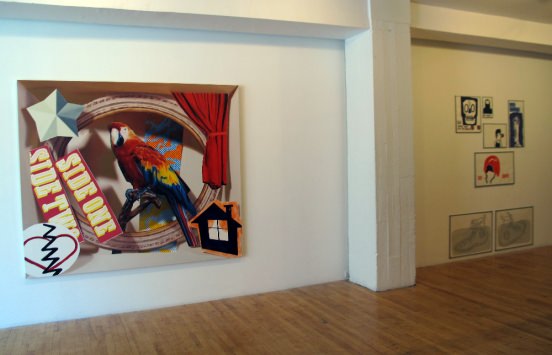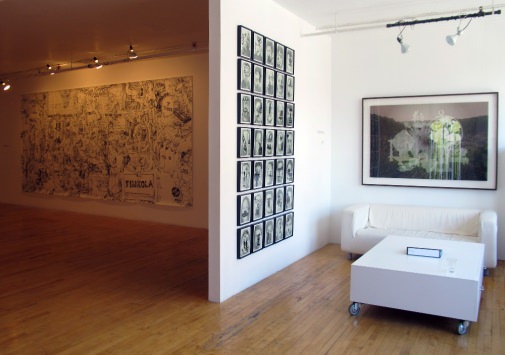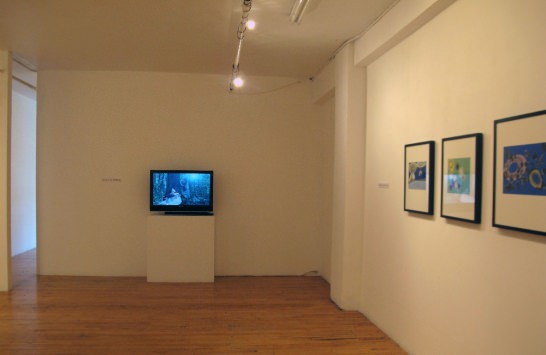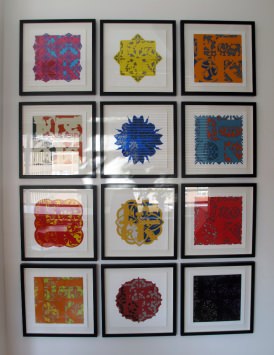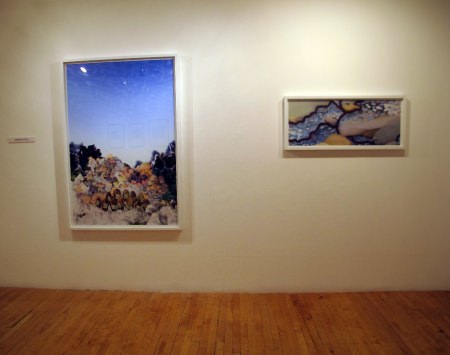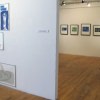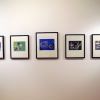Électrons libres
In this exhibit, I wanted to present works that place themes of independence, liberty, marginality and even anarchy, at the forefront. For this reason, I chose the title, Électrons libres, a French expression that encapsulates these themes. In English, a potential translation would be, Free Thinkers. Be it in a physical or figurative sense, whether a particle or an individual, the free electron evolves with little attachment to its surroundings.
The concept of the électron libre is represented in several different ways in the exhibit.
Expressed in certain works by evoking the physical characteristics of the atom, in Stephen Schofield’s drawings it appears as a game of gravitational forces; in Alana Riley’s photograph as rapid and multidirectional movements. In the same vein, David Elliott’s painting recalls the atomic model with its disparate images, whirling around a parrot who takes on the role of the model’s core.
In some cases, it is an artist’s reference to the independence of the individual that is most significant. The independence of those who revolt, rebel, who do not care what other people think of them, to the point of fleeing or even dying. This is what I discovered in Celine B. La Terreur’s videoand heavy metal tribute to Maria Callas (a woman who defied conventions in the opera world of her time) through the appropriation of Carmen, from Bizet’s opera (which also tells the story of a rebellious woman who dies while demanding her independence). This irreverent quality is also present in the works of Michel Niquette and Adrian Norvid. The former directs his rage at the power of giant international corporations in the series titled, fuck and portrays those who live on the margins of society, such as wanted criminals and runaways in the series, Clinique. The latter, in his drawings, creates a small chaotic world populated by non-conformists and eccentrics, who have a dismissive relationship to the society that surrounds them.
Ana Rewakowicz’s work exposes the independence that comes with a nomadic and self-sustainable way of life. Furthermore, in her travels, the artist calls into question the idea that an individual is defined by place and belonging.
For Massimo Guerrera, independence is found in the inner lives of individuals. The process of reflection, of meditation and introspection presented by Guerrera hints at the potential for autonomous thought and judgment. For her part, Élise Provencher interrogates madness and the idea of multiple personalities in order to call society’s normalization of the individual into question.
Finally, zipertatou creates a fissure in the real world and presents us with a fantastical universe where peanuts form a joyous society based on leisure and pleasure. By feeding the fertile imagination of children, he constructs a world where, symbolically, it is possible to enjoy freedom to the fullest.
Yan Romanesky
Yan Romanesky thanks Philippe Chevrette for his precious collaboration.
Press releaseNews
No news at the moment.


